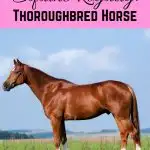Thoroughbred horses are undeniably awe-inspiring. The very mention of the breed name brings to mind fast runners with elegant legs, strong-hearted champions, intelligent problem-solvers and even fiery, distinct personalities.
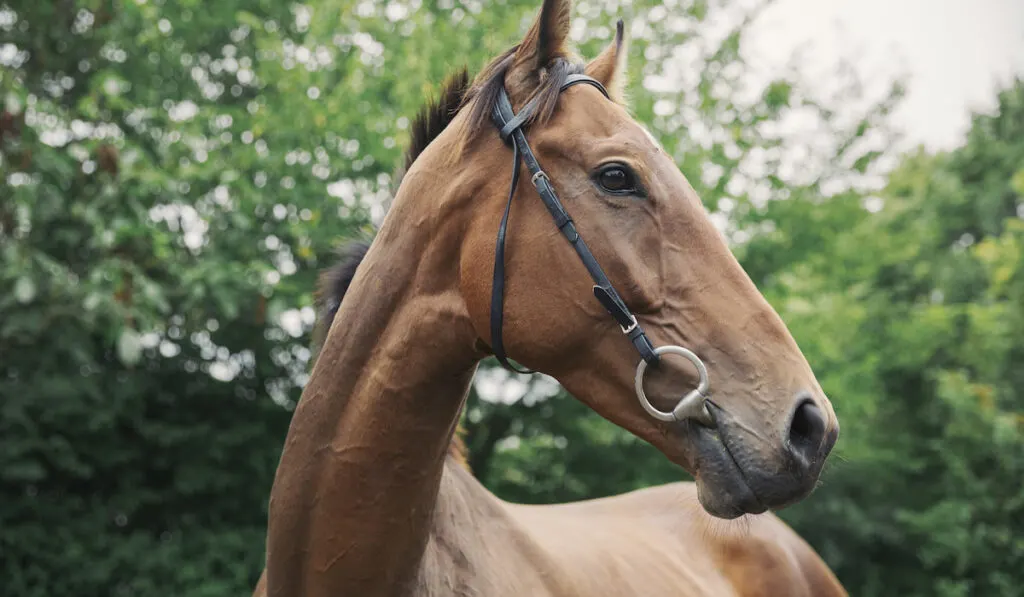
Long associated with flat horse racing (the so-called “sport of kings”) the Thoroughbred has stood as a distinct and noble breed of horse for centuries. And while, yes, they are indeed dedicated speedsters, there is so much to learn and appreciate about these noble steeds.
From their build to their mind to their careers including racing and more, there is so much to learn about the Thoroughbred horse.
Table of Contents
The History of the Thoroughbred
Origins of the Thoroughbred
All modern Thoroughbreds have a pretty common link in that, thanks to deliberate breeding and impeccable record keeping in the racing world, you can trace every registered Thoroughbred back to all or one of three original horses in their lineage: the Godolphin Arabian, the Darley Arabian and the Byerly Turk.
These three stallions were bred under the reigns of King James I and King Charles I to 43 Royal Mares and thus began the original official record-keeping of all foals in this new line, the English Thoroughbred. (source)
Thoroughbreds In America
The Thoroughbred then made its way to the new Americas in 1730 by way of Bulle Rock, a son of the Darley Arabian, kicking off a 45 year-long import of 186 Thoroughbreds into the colonies as the foundation of modern American Thoroughbred.
This new generation would go on to be the foundation for all modern Thoroughbred racers up through today – and still, as required, are all descended from those first three horses.
In fact, since all births are recorded and traced back through horse history, you can look up any Jockey Club registered Thoroughbred and trace their lineage for yourself. Keep going back far enough, and you will surely see at least one, if not all three, names of the trio of sires.
Jockey Club Registration Requirements
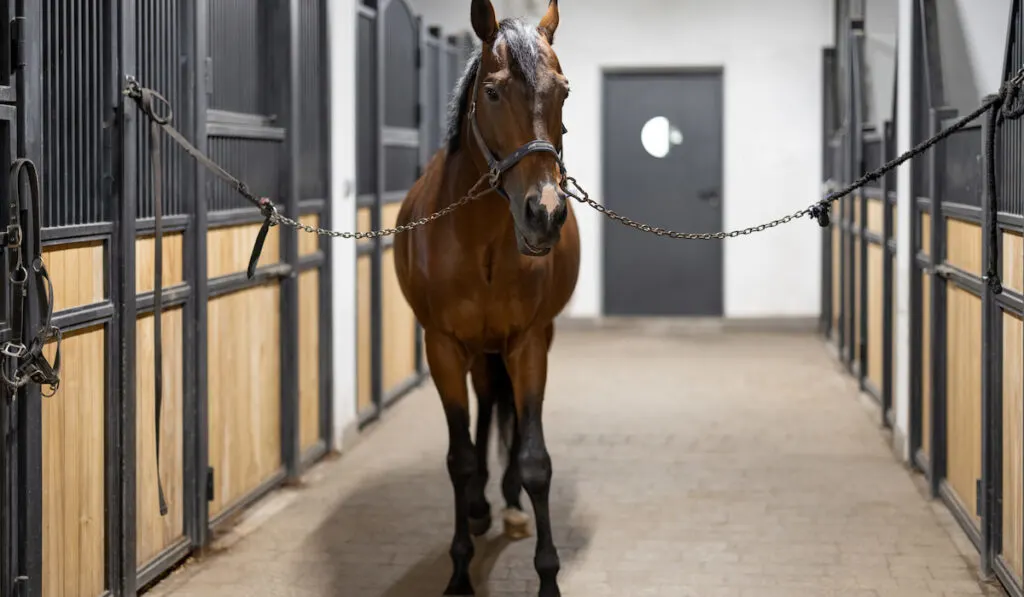
To be considered eligible for the Jockey Club (and a “true” Thoroughbred) the foal must be a ‘live cover’, meaning a natural conception between the stallion and the mare and thus no artificial insemination, as is most commonly used as a breeding method with other horse breeds.
In 1976 the Jockey Club was one of the first breed organizations to announce the use of scientific methods of parentage verification. A New York Times article outlined for the public how Thoroughbred stallions would soon be required to undergo blood typing in order for offspring to be registered. (source)
The Jockey Club continues this practice today, as do most modern registries, though the method has changed to DNA testing via hair samples.
The Birthdate of a Thoroughbred Horse
Where Thoroughbreds differ from other breeds, too, is in their birthdays. Due to racing age groups, Northern hemisphere Thoroughbreds are all officially considered to be a year older on the 1st of January each year, rather than on their actual, physical birthdates. (source)
Using January 1 as a birthday enables horses to start training and competing in age-restricted races much earlier, extending their racing careers and working towards a standardization in entries.
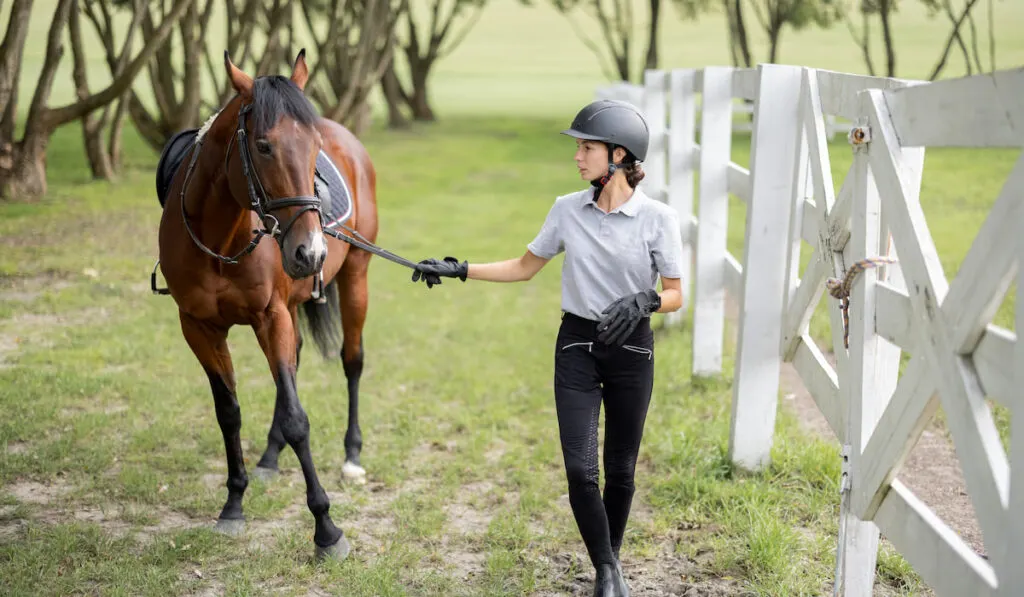
In fact, each year of birth is signified by a different letter of the alphabet. Before race horses can run in their first race, they are individually identified via a tattoo on their upper lip.
All off the track thoroughbreds (OTTB’s) who have raced, can be identified by their tattoo. For more info check out our article on OTTB horses and lip tattoo identification!
Physical Characteristics of the Thoroughbred
No comprehensive breed overview would be complete without painting a physical picture. And for Thoroughbreds, that means some defining characteristics as well as some ranges they can occupy.
Height
When it comes to their height, thoroughbreds generally fall somewhere between 15 hands and 17 hands, with exceptions on either side of the spectrum. The average Thoroughbred, though, tends to fall somewhere between 15.3 hands and 16 hands.
Head
Their Arabian blood contributes to a long, lean face. Not quite as “dishy” as a pure Arabian (aka have a concave face, one that swoops inward between the forehead and the nostrils) but certainly with some tapering evident.
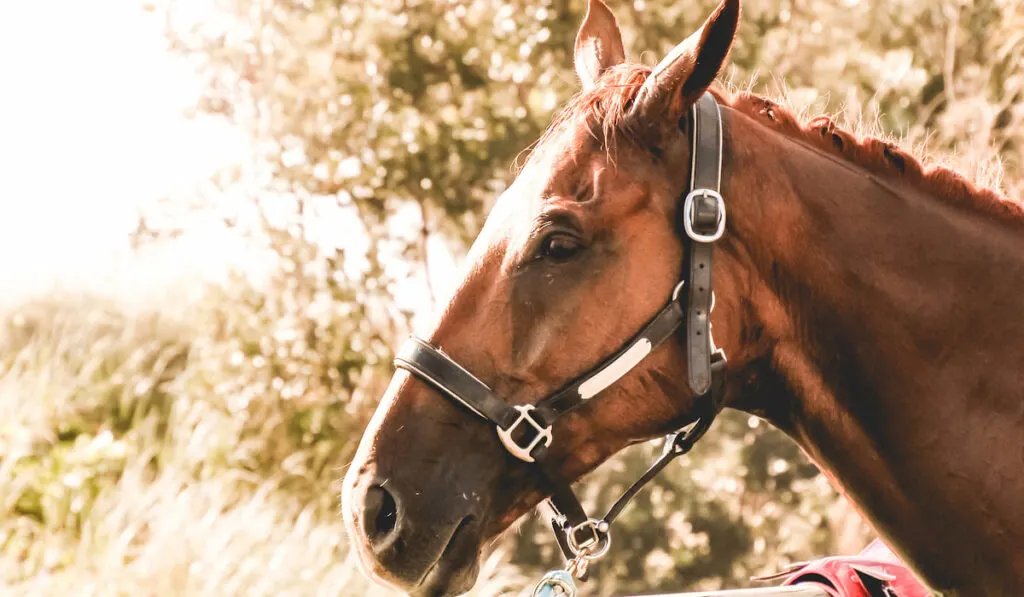
Body
In terms of their body type and physical appearance, the Thoroughbred typically will have a deep chest, a lean and toned body and should have long, flat muscles. They are strong but toned – muscular without being stockier. They also have longer, more narrow backs with high withers, almost the exact opposite of, say, the short back and rounded withers of a quarter horse.
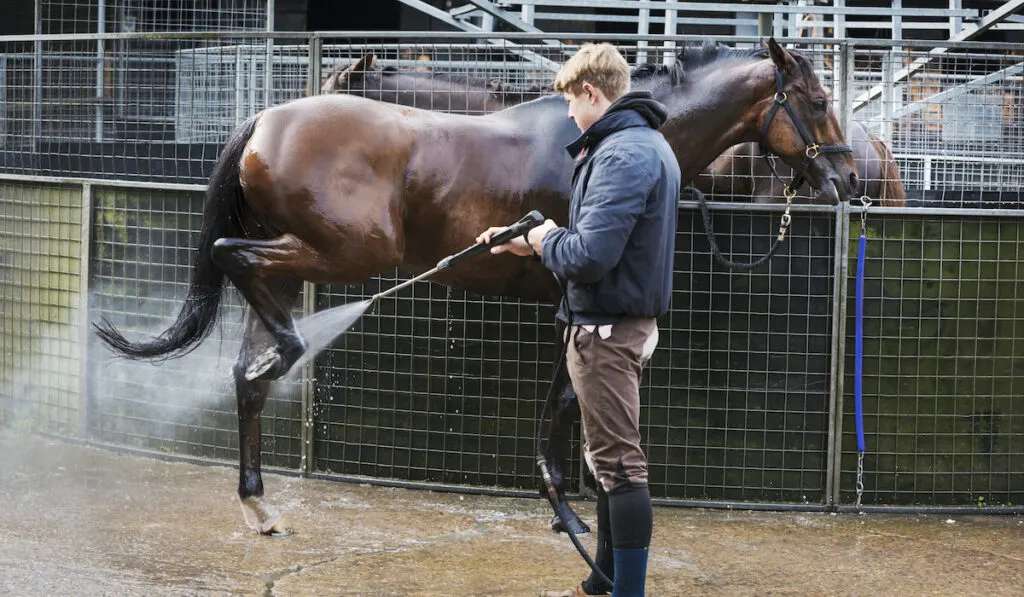
Their skeletal structure is made up of fine to medium bones – as they are fast and light sprinters, many racehorses have lighter skeletons than a working horse would, due to the nature of their breeding.
Expect a Thoroughbred to weigh in at around 1,000 pounds, give or take a hundred or two. They have well-angled shoulders and lean but powerful haunches. Overall, their body is powerful, lean and athletic.
When it comes to their coat, you can expect to find short, fine hairs. This gives them a silky feel and a shiny look, but can often mean that they are more likely to be too cold.
This fine hair combined with a lean, low-body fat percentage naturally means that they may require additional blanketing or warmth in the winter when compared to coarser haired horses.
However, since Thoroughbreds are bred for speed and athleticism rather than showing, there is no set standard of conformation to describe the ideal Thoroughbred body type.
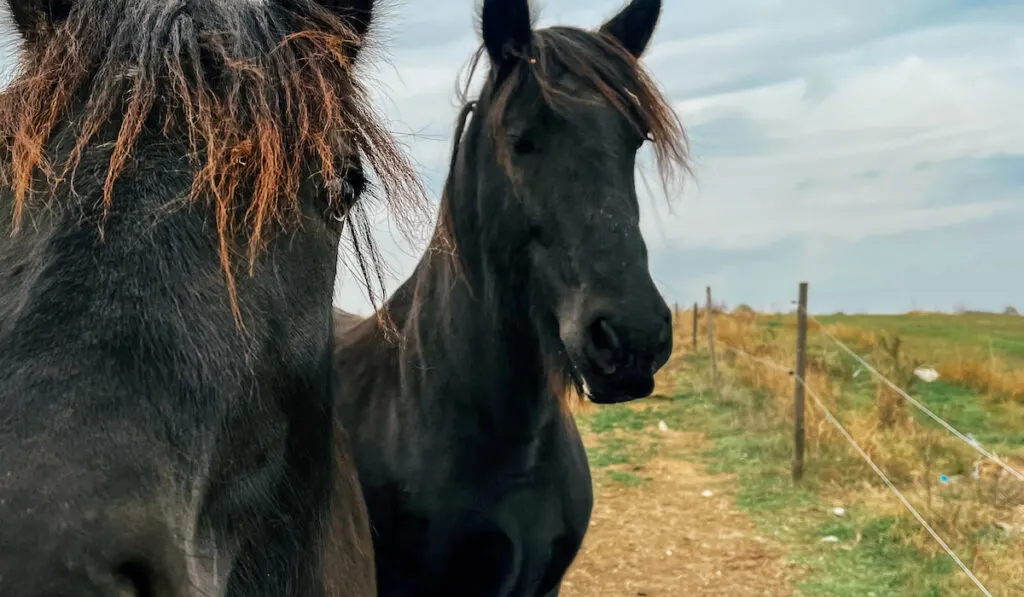
Thoroughbred Heart
You may have heard someone refer to a horse as “having a lot of heart”. Typically that means that the horse really tries to win or is rather affectionate towards it’s owner.
Internally, Thoroughbreds are finely tune, hard-working machines. Not only do they have well-developed muscles, but they tend to have large, well-functioning lungs so that they can take it a lot of air needed to pump blood, supply oxygen to the bloodstream and keep them running faster.
In the case of the thoroughbred, “having a lot of heart” can be an actual literal rather than figurative statement. Their hearts are little miracle workers, pumping and beating furiously.
The average Thoroughbred heart is around 8.5 to 9 pounds of muscle but Secretariat’s heart was famously found to be 22 pounds! With all that extra heart muscle, it is no wonder he was able to run so fast and with so much stamina. (source)
Identification
When it comes to identifying racehorses, too, that tracking goes beyond papers that track names, dates and physical markings. Racehorses are often tattooed on the inside of their top lip so that one horse can never be passed of as another.
This tattoo also acts as a theft deterrent. The inside of the lip is marked with a letter that corresponds to a birth year, followed by a string of numbers. This unique indicator is further proof of a Thoroughbred’s pedigree and identity.
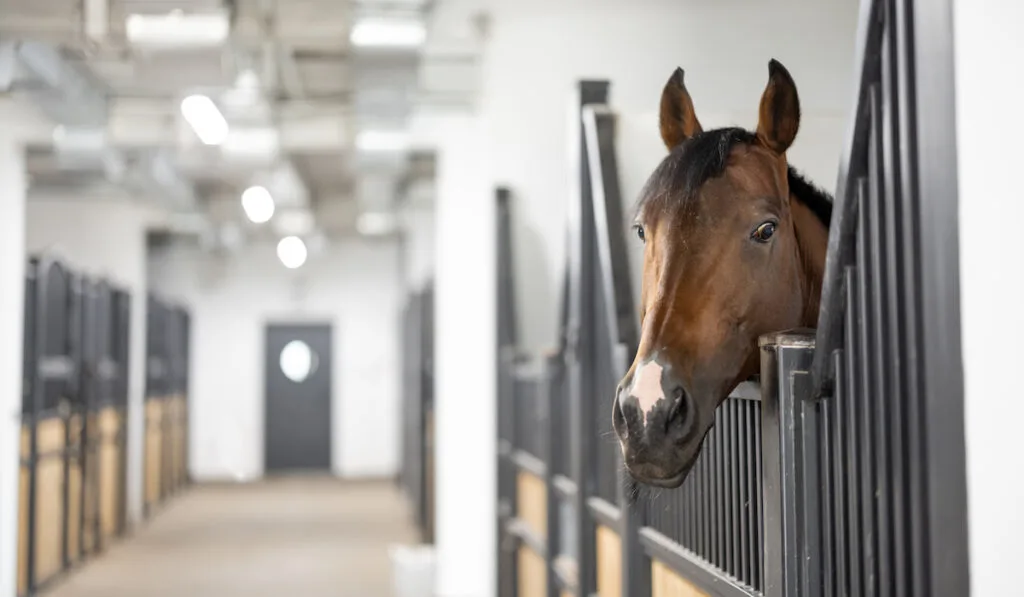
Secretariat and the Thoroughbred Physical Deviation
Furthering Secretariat’s physical differences (while they differed from the norm, they were certainly something of an advantage to this speed machine) it was discovered that his sturdy, muscular hindquarters were the main source of his power and included a more pronouncedly sloped croup that extended the length of his femur. As a result, when he was in full stride, his hind long legs were able to reach quite far underneath himself, thus increasing his drive.
He was also wider, even longer backed and all around just bigger in body than other, more classically elegant looking Thoroughbreds with a well-made neck – all these factors together played up the best of a Thoroughbred’s traditional physical attributes and contributed to the efficiency in his heart, his lungs and his body working so well together.
With all these parts of his body formed to a physical peak, Secretariat was able to make history as the first Triple-Crown winner in a 25 year stretch, thanks to his 31-length record-breaking win at the Belmont Stakes in 1973.
Thoroughbred Breed Personality and Temperament Traits
“Spirited” is often a word used to describe Thoroughbreds as a breed. They are notorious for being quick-witted, quick-footed and, often, quick-tempered.
What they are not, though, is inherently mean-spirited – their tempers arise more often from boredom due to their intelligence or a lack of clarity in what they are being asked to do.
A Thoroughbred horse likes to stay busy. They like to be challenged, to have a job and to not be bored. A smart horse left alone in a field to be bored is a recipe for depression or disaster.
When you are teaching something new to a Thoroughbred, you will often see their tongues move in and out, almost as if they are lightly chewing. This is often a sign of deep concentration as they are paying attention, thinking and memorizing.
With their intelligent minds comes a complex nature, too. Because they are so often observing behavior, learning new things and forming memories, they are uniquely poised to form equally complex relationships. They bond well with one or a few humans who work with them on a regular basis and learn their patterns.
Once you have a Thoroughbred in sync with you, you have a loyal, trusting and loving friend. These partnerships between Thoroughbred and rider and very important, too, as the Thoroughbred is able to make necessary decisions even when under saddle if the need ever arises.
The downside to this quick thinking and independence is that sometimes they can be a bit strong-willed even under saddle and rein and so there is sometimes a struggle for dominance. What is important to remember, though, is that respect and authority is not won through dominance and physical intimidation. Show your Thoroughbred firmness but with a gentle hand and use your wits rather than your anger.
Because of their speed and spirit, Thoroughbreds are considered to be “hot-blooded” horses.
Thoroughbred Horse Coat Colors
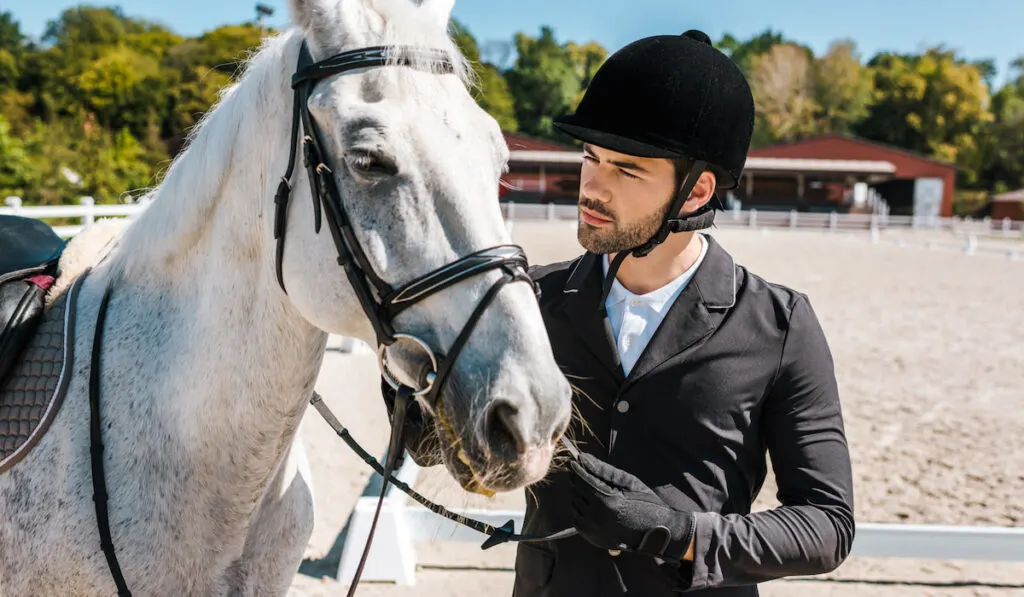
You can find Thoroughbred coats in a virtual rainbow of solid shades. While the most common colors are chestnut (reddish brown) and bay (dark brown), Thoroughbreds so come in black, gray and white as well.
Thoroughbreds can be all one color or have certain markings on their legs and faces: a.k.a. Socks, stockings, blazes, stripes, stars, etc. These are oftentimes white markings (especially on chestnuts) but can also be darker or black (especially on bays).
Roan Thoroughbreds
Interestingly, the Jockey Club allows thoroughbred horses to be registered as “roan” even though, up until recently, true roans do not exist in the breed. Horses designated as “roan” are usually gray and sometimes receive the designation gray/roan. A natural mutation seems to have occurred in the progeny of the New Zealand born stallion, Catch a Bird. (source)
Paint / Pinto / White Thoroughbreds
Thoroughbreds with pinto markings do exist as well. Typically these painted thoroughbreds are carries one of two main color genes, dominant white (KIT) or sabino. (source)
Dilute Thoroughbreds
You will almost always see a solid coated Thoroughbred, but it is not impossible to find a paint coat. Also rare, but not non existent, are dilute colors like palomino, buckskin, cremello and perlino.
What colors can’t thoroughbred horses be? A few colors do not exist at all in Jockey Club registered horses. This list includes dun, pearl, champagne and tobiano.
Common Thoroughbred Crosses
It is possible, then, for a Thoroughbred to be a half Thoroughbred in breed, blood and physicality but not be considered a full Thoroughbred and thus not eligible for Thoroughbred racing.
These are referred to as Grade Thoroughbreds in the United States and as half-breds in Great Britain. Grade Thoroughbreds, while not racers, are still often impressive athletes and are often used quite successfully as hunters, polo ponies, stock horses, pit ponies and pleasure riding horses.
While many different breeds of horses have been interbred with Thoroughbreds, there are a few that are found more commonly as they produce highly desirable offspring.
In fact, Thoroughbreds and cross-breeding them are actually to thank for the modern Quarter Horse. In 1752, a Godolphin Arabian descendent was bred to a Spanish Barb, producing the original foaling and groundwork for the modern Quarter Horse line. Even today, Thoroughbreds have a part in Quarter Horse racers. The famous Thoroughbred racehorse, Storm Cat, is equally as revered in the Quarter Horse world for having produced many excellent Quarter Horse runners.
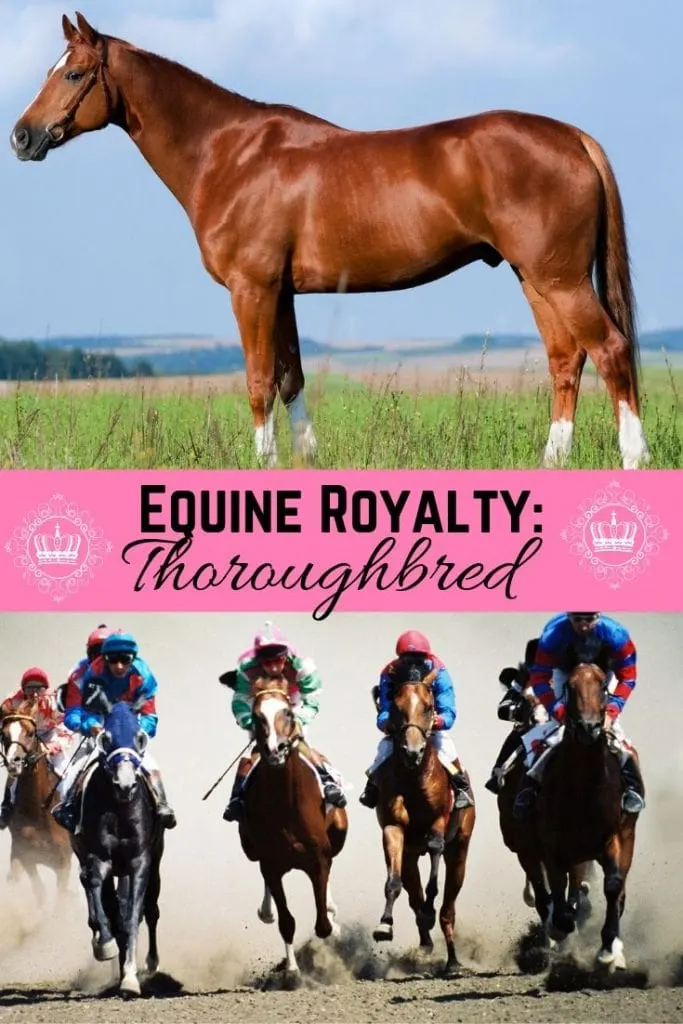
Appendix Quarter Horses
Quarter horse-Thoroughbred crosses are recognized by the American Quarter Horse Association as “Appendix” horses, and officially have records of over 600,000 of them. They are recognized as eligible for competitions in the Quarter Horses.
In fact, if the resulting horse earns at least 10 points in recognized shows, it can be bred, again, to a thoroughbred. This can continue as long as the offspring performs well against Quarter Horse competitors. It is, therefore, possible for a “purebred” quarter horse to be mostly thoroughbred.
There are other breeds that, similarly, allow this type of crossing where the resulting foal is still a “purebred” (just not a purebred thoroughbred). Here are a couple:
American Paint Horse
An APHA registered horse can be bred to a colored American Paint Horse and the resulting cross-bred can be registered as a purebred American Paint Horse.
As with the Quarter Horse, the resulting foal can continued to be bred back to thoroughbreds as long as each foal meets both color and performance requirements.
Anglo Arabian
You will also often find Arabians bred to Thoroughbreds, as so much of their DNA and bloodline is already tied together. When you cross a Jockey Club registered Thoroughbred with a purebred Arabian, the resulting foal is considered an Anglo Arab (or Anglo Arabian).
The Arabian Horse Registry allows Anglo Arabian foals to be registered and their pedigree tracked for future generations. (source)
Warmblood Registries that Allow Thoroughbreds
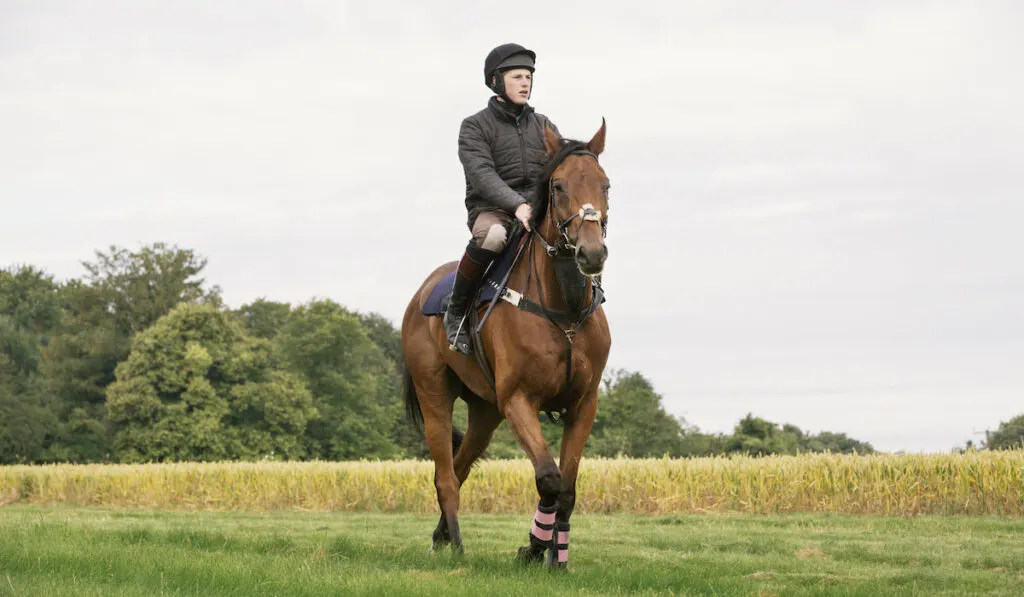
Some warmblood registries allow Thoroughbred mares to be inspected and approved to breed with warmblood stallions. Each registry has it’s own set of rules regarding how mares get added as well as how to register the resulting offspring. Here are some warmblood registries that accept Jockey Club Thoroughbred mares:
- American Warmblood
- RPSI(Westfalen)
- KWPN (Dutch Warmblood)
- Hanoverian
- Holsteiner
- Dansk Varmblod (Danish Warmblood)
Common Disciplines for Thoroughbreds to Compete in
The most common and obvious use for Thoroughbreds is, of course, racing. And while the Triple Crown gets all the glory, there are not only a number of high-dollar flat races for this breed, but also Steeplechase races. These are typically run on turf and they incorporate hedges as obstacles for the Thoroughbred to jump over along the track.
Because of their natural speed, agility and ability to learn, Thoroughbreds are more and more being recognized as ideal hunters and jumpers. Their natural athleticism means they can speed through courses with ease, while their powerful haunches launch them over jumps. Since they like to stay occupied and challenged, a jump course is just the thing to engage their minds.
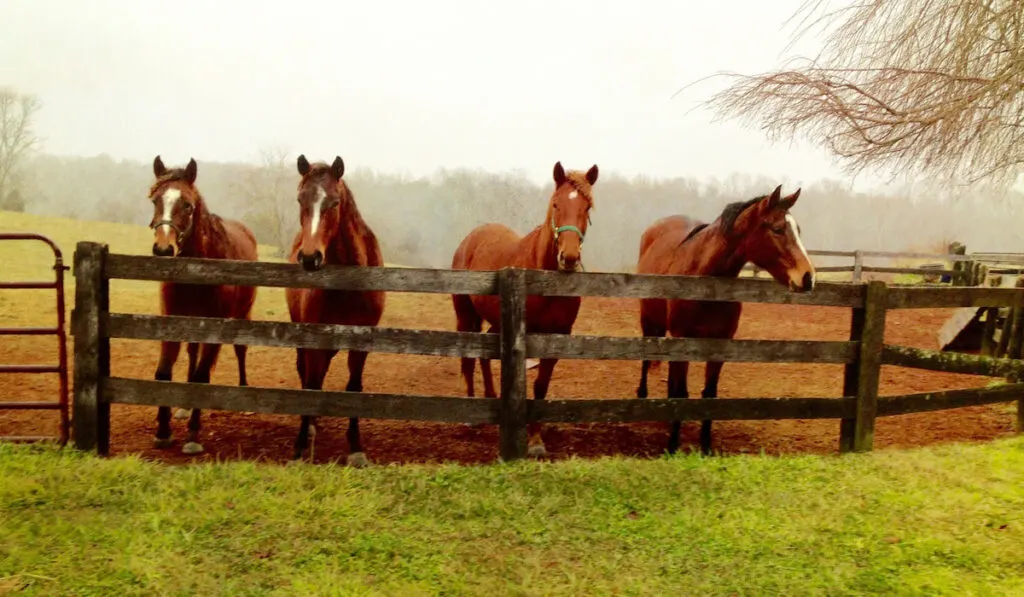
Thoroughbreds often excel in jumping at a high level, just as they do in racing. Laudanum, for instance, was a French Thoroughbred stallion who made a name for himself by winning several prestigious jumping competitions including the Grand Prix, Puissance and Nations Cup.
Their smooth gait makes them great at cross-country courses, too, as they can cover a lot of ground in almost no time, all while providing an even, comfortable ride for their rider. Thoroughbreds are also often used in dressage events as they are quick to respond to light touches and are naturally graceful movers.
Life After Racing
Though horse racing is where almost all Thoroughbreds get their starts, it is a crowded, competitive field funded by old money. As such, there a lot of Thoroughbreds bred and trained who simply do not make it as racers. This can be due to any number of factors including simply not being fast enough, not having the right temperament, merely not being interested in racing, etc.
When it is apparent a Thoroughbred will not make it as a racer, as well as when a working racer has reached the retirement age and must leave racing behind, the question always is: what to do with these horses?
Sadly, the answer is not always so positive, as many end up abandoned or sent overseas to slaughter. The good news, though, is that word has gotten out about these magnificent animals and there are a number of avenues open to them.
From traditional horse rescues to rescues that specialize in off the track Thoroughbreds (OTTBs as they are affectionately known in the biz) to trainers who actively work to retrain and rehome ex-racers, a Thoroughbred post racing life is easy to find and easy to love.
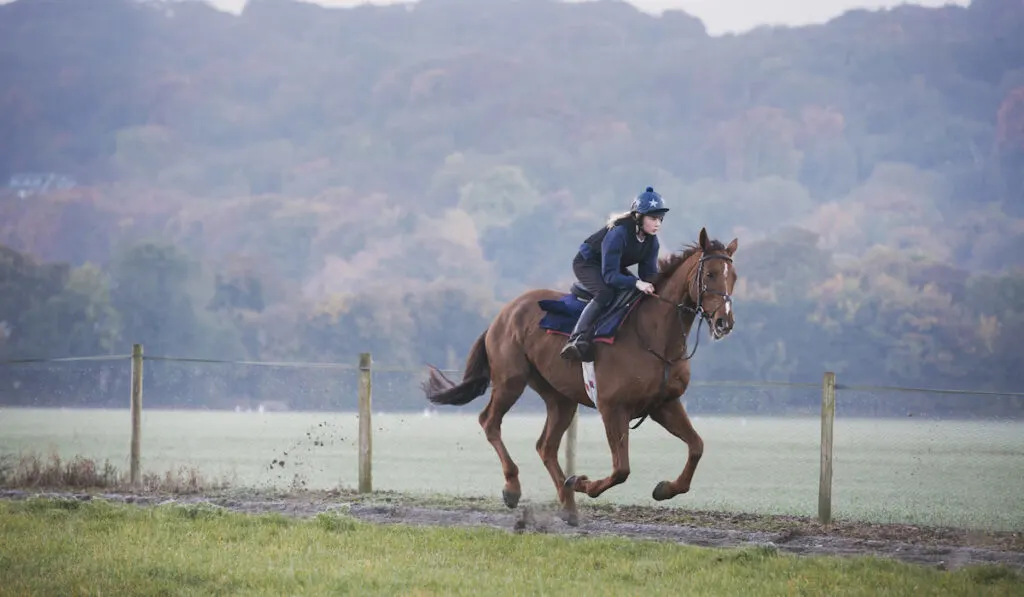
Coming fresh off the track does require some adjustment, though. For one, an OTTB likely will not have been trained much at various gaits. While they are more than just greebroke, they often do not have much experience working for extended periods at trots or canters and need to be eased back from a full-on galloping life. Also, they will likely have different, more intense reactions to a crop – prepare for the Thoroughbred to take of like a bullet rather than pick up just a little pep in their step.
A lot of groundwork is often required in retraining OTTBs so they are functional as more typical pleasure or show horses. From learning that pressure from a pulled-back bit means stop not faster to even learning how to be properly turned out rather than in a stall, there is always going to be some education.
Luckily, Thoroughbreds are smart and generally pick up on new training. There are even featured Thoroughbred makeover competitions that capitalize on how quickly OTTBs can learn a new life.
Once you have a retired racehorse retrained, you are lucked into a smart and loyal companion for life. Any discipline, as mentioned above, that you would take up with a warm-blood or a Quarter Horse or any breed you can enter easily into with a powerful, smart Thoroughbred. Thoroughbred horses can even be ridden western!
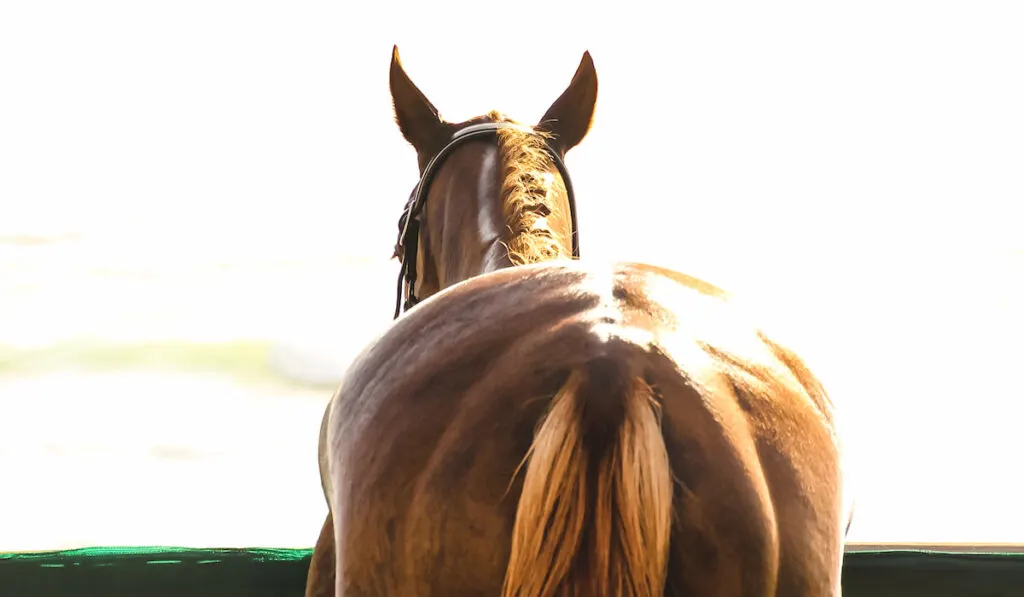
While Thoroughbreds are undoubtedly known for their racing prowess and are often even referred to as equine royalty because of this, they are quite complex creatures. From their athletic bodies to their loyal nature to their intelligent minds, Thoroughbreds are royalty in the animal world for more than just their speed. No other breed is as carefully observed and recorded – and no other breed is as swift. Why not consider one of these majestic horses for your next mount?

